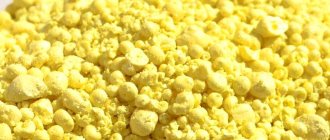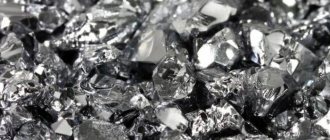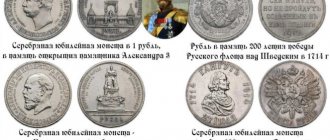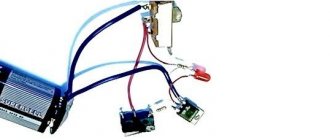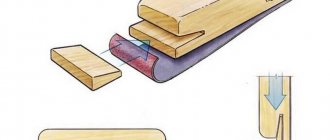Who among us has not dreamed of holding an old book or map in our hands, or receiving a letter from the past? It would seem that this is quite problematic, because antique books are expensive, and letters are not kept for so long.
But what if you try to make a book or piece of paper, a letter, a map or a postcard visually older yourself? It's so simple!
Let's talk to you about how to age paper with and without text, and in what cases you may need this skill.
Decor using paper
First of all, let's consider this question: why do we need aged paper at all and what can and should it be used for?
First of all, it is needed for the design of various crafts: postcards, photo albums, invitation leaflets. It can also be used to create original albums, writing sheets, thus showing your originality.
Agree, an “antique” book, a vintage postcard or just a sheet of parchment with a drawing or map will delight any person, no matter how old he is and no matter what his hobby is. Let's talk about how to make aged paper at home without resorting to outside help and without spending a lot of money on it.
Treating paper with tea
First, let's talk about how to change a sheet of paper using various liquids. Let's start with one of the most famous methods, that is, we will discuss how to age paper with tea. This is the simplest and most accessible method for everyone.
In order to age paper using tea, you will need strong brewed tea at the rate of 5-10 teaspoons of tea leaves per glass of water (if tea is in bags, then three bags of tea leaves will be enough). The tea should be brewed for 10 minutes, then it must be strained.
Having poured the finished tea into a small bath, soak the sheet of paper you need in it (you can crumple it first, so that the paper is better saturated with water, and also in order to give it an older and shabby look), let it sit for a couple of minutes. Then we take it out of the water and wait for the sheet to dry. Finally, iron it with an iron, leveling the surface of the sheet.
How to create the “old paper” effect
Old paper will serve as an excellent basis for creativity. It can be used for decorating albums and photographs in retro style, making various ancient scrolls, maps and old documents. In order to artificially age paper yourself, you won’t need much effort, and there are several ways to implement your plan at home.
Tea or coffee
The most famous way to age paper is to soak it in regular tea leaves. To do this, pour 5 tablespoons of black tea (leaf) into a glass of boiling water and leave to infuse. If there is no tea, then you can replace it with coffee: for a glass of boiled water, 10 teaspoons of coffee. The stronger the solution, the darker the paper will be.
The paper must be lowered into a bath with the resulting strained liquid. To make the paper look older and more frayed, you can crumple it in advance. The sheet is aged for five minutes, after which it is removed from the container and dried on a flat surface. If for some reason the process needs to be accelerated, it is recommended to iron the wet sheet with an iron.
Milk
You can also make the paper old by using milk, which should be applied to both sides of the sheet with a cotton swab. When the sheet dries slightly, it must be ironed. If you hold the resulting paper over a hot stove, you get quite picturesque scorch marks that add historical authenticity.
Let's resort to coffee
Now let's talk about how to age coffee paper. This method of aging is not much different from the previous one. The difference is in the brew itself. For a glass of water you need 5 teaspoons of natural ground coffee. Brewed coffee should be steeped for 10 minutes, then strained. At the same time, sediment should not get into your bath in which you age the paper. Otherwise, streaks and marks may remain on the paper. In some cases, the sediment can be used to create scuff marks and brighter small spots on a piece of paper.
The time for which a sheet of paper should be immersed in the solution is no more than five minutes, otherwise the sheet will get wet and tear when trying to remove it. In addition, we do not recommend that you put several sheets of paper together in the tray, otherwise they will bunch up into one soggy piece of paper and tear.
The sheet of paper should also be dried on a flat surface, and after drying it is ironed using an iron.
If you don’t have natural coffee at home, you can replace it with instant coffee.
How to prepare paper for decoration
Depending on what effect you need to achieve for further use of colored paper, different methods of preparing the source material are used. Regular printer paper, a notebook sheet with a square or an oblique ruler, book pages, photographs from old newspapers or maps from a geographical atlas are suitable for work. Different types of paper have different densities, so they need to be pre-treated to facilitate the penetration of dyes into the material.
To imitate old letters and documents, a sheet of paper of any size must be folded in the same way as business correspondence is usually folded: in three, four or in half. If the paper is thick, then it is best to do this several times, folding and straightening the folds again. To make it look natural, you can bend a corner of the sheet, cut off the sharp part, twist it a little and smooth it out with your fingers. All this will subsequently give the leaflet a greater resemblance to real old material.
Book pages are most often worn out and frayed around the perimeter. The paper in the middle usually remains flat and relatively clean. Therefore, when imitating the pages of an old book, you need to pay special attention to the corners and edges of future colored paper: they can be torn, crumpled, or scorched over an open fire. If a real book is used for aging, then the corners can be processed with a file or knife before painting, making them slightly rounded.
All preparatory measures are aimed at changing the structure of the material, making it more loose. After staining, a characteristic darkening occurs in places of folds and creases, which occurs when paper documents are stored for a long time. Edges that are torn or scratched by a file also change the density, allowing the dye to penetrate inside in a limited area, as happens when exposed to natural environmental factors during storage of papers.
If you want to put a printed drawing on a sheet, you should use only laser printers. When printing on inkjet models, you should purchase high-quality original cartridges with pigment ink. But even this does not always help preserve the print when painting. It is best to apply the design after decoration, selecting the sepia color for printing in the printer settings.
Using milk
Now let's talk about how to age paper using milk. To do this, you will need milk with a high percentage of fat content. It’s better if it’s completely homemade. You should also find a brush to apply it with.
We crumple the sheet of paper, then use a brush to thoroughly paint it with milk on both sides. After it is well soaked on both sides, lay it out on a flat surface. Leave it for a while to dry. Then iron the sheet using an iron. In this case, the temperature should be high enough, and dark brown spots should appear on the paper itself.
In addition, you can also dry a sheet of paper in a microwave oven or using a hair dryer. The main thing in this aging method is the effect of high temperature on the solution itself, with which the sheet of paper is impregnated.
We use tea
What an amazing and healthy drink! Tones, quenches thirst, fills our body with useful substances, has healing properties... And also knows how to age paper! So, what do we need to turn new leaves into leaves that have turned yellow from time to time? We write down:
- tea leaves – 5-10 tbsp. spoons (the stronger your tea leaves, the brighter the aging effect will be. For a slight yellowness, 5 spoons are enough);
- boiling water – 250 ml;
- a sheet of white paper in A4 format;
- container for soaking sheets;
- clean surface for drying.
To give the paper the most antique look, you can first crumple it and straighten it, or you can make just a few creases. Next, let's deal with our tea: pour boiling water over the tea leaves, let it brew for 10-15 minutes under a closed lid.
After this, filter through a strainer and pour into the prepared container. It is better that it looks like a small bath, and the leaf can fit in it without being bent. The next step is aging. Dip a sheet of paper into the tea leaves and leave it there for just a couple of minutes.
After the time has passed, we carefully take out our sheet, and then carefully lay it out on the prepared surface. After it has dried, it can be ironed on top.
In order to give our sheet the most realistic look, you can sprinkle a couple more drops of tea leaves on it. If you want to get paper that has “survived the fire”, resulting in dark spots appearing on it, then simply burn its edges with a lighter or candle. Ready!
Lemon juice
Let's say a few words about how to age paper using lemon juice. This is another quite interesting method and probably known to many. So, aging paper using lemon juice. If you were into detective stories as a child, then you probably know that many criminals and even detectives wrote their secret notes using lemon juice. In this case, the inscription appeared only under the influence of high temperatures.
To age paper using lemon juice, you will need the sheet of paper itself, lemon juice, and a hair dryer. A hair dryer can replace a microwave or a hot iron.
Squeeze the juice from the lemon. Then we apply it to a sheet of paper using a sponge, brush, or simply dipping it in a container with lemon juice. Then you should place the sheet on a flat surface and dry it with a hair dryer. As it dries and is exposed to heat, it will begin to darken.
Now you also know how to artificially age paper using lemon juice.
Alternatively, this method can be used for additional leaf decoration. So, you can make inscriptions on a sheet of paper using lemon juice, and then develop them. This is a rather original way to decorate cards and albums.
Aging paper using potassium permanganate
If you have potassium permanganate (that is, just potassium permanganate) at home, then it will be quite easy for you to age any paper. To do this, you need to pour several granules of potassium permanganate into the container in which you are going to paint the sheet, then dilute it in cold water until completely dissolved. In this case, the solution should be a rich dark pink color. When working with the solution, be sure to wear gloves so as not to stain or burn your hands.
After this, dip the paper in water for five minutes. When it is sufficiently saturated with water, take it out of the container and lay it out to dry.
After drying, the paper acquires a pleasant brown tint. Now you also know how to age paper using potassium permanganate. As you can see, this is a rather interesting and simple method. In addition, with the help of potassium permanganate you can artificially age fabric items.
How to age paper with text at home?
Why did you make this point separately? There are some nuances here that I would like to draw your attention to. If the text is already on paper, you must initially know how the letters and images are applied. Otherwise, upon contact with water, the ink or printer powder will simply blur when interacting with water and all your work will go to waste.
If you initially prepared an image or text on a computer, be sure to use a laser printer for printing. This way, everything that appears on the paper will remain with a good outline during processing.
If you use a gel pen or the text is printed on an inkjet printer, only the dry thermal method will help to “add age.”
There are two options for aging paper without water. In the first, we will use dry pigment for coloring and extract it from slate pencils. You can also use pastel crayons.
- It is necessary to take shades of pastel colors or brown. Or a combination of yellow and gray.
- Grind the lead into powder by pouring it into different containers. It is advisable to slightly wrinkle the sheet.
- Take a soft sponge and carefully, but with varying intensity, rub the pigment into the paper. Somewhere take dark shades, somewhere lighter.
- You can also use a stamp stamp with a vintage pattern, dip it in tea or coffee and go over the paper.
If desired, place the workpiece for a few minutes in a preheated oven at 200 degrees. This will cause the paper to shrink slightly and acquire an uneven surface.
The second method will be using the scorching sun. Therefore, as you yourself guessed, it is necessary for this to be a hot summer outside. Or you will have to visit the tropics for this. If the task of aging paper overtook you in the summer and there is plenty of sun, then we lay the prepared sheets with text on the surface directly under the scorching rays of the sun. After the first day it will turn slightly yellow and the longer the rays fall on the leaves, the yellower they will become. A south-facing window sill is very suitable for this. Just lay out the sheets and forget about them for a few sunny days.
Aging paper using a candle
Now let's move on to thermal methods of aging paper. First of all, let's talk about how to change the age of paper using fire.
The simplest and most likely known to many method is to use fire to age the paper and give it the appearance of something that has survived a fire.
For this you need a candle. In this case, you will have to age the paper over a sink, so that in case of fire, you can quickly extinguish it and prevent a fire.
We place the candle in the candlestick and then place it in the sink. After this, light the candle. We take the sheet of paper you need in our hands and begin to carefully move it over the candles. In this case, there should be a distance of at least 10 cm between the paper and the fire. The paper should not be held in one place. So you can set it on fire.
Aging with milk
If everything is clear with coffee and tea, at least the shade is the same, then how can ordinary milk add age to a piece of paper? Quite possibly. This artificial method is less popular than the previous ones, but in vain, with its help sheets of paper acquire a special shade of antiquity. So what we need:
- milk, preferably homemade and full-fat – 150 ml;
- a sheet of white A4 paper;
- paint brush;
- drying surface.
First, you need to prepare the paper: to do this, we cut off the sharp corners of the sheet, turning them into rounded ones, and so that they do not look too neat, you can go along the edges with sandpaper; the rest of the sheet, by the way, can also be touched.
You can age paper in a simpler way: use bright sunny days! The prepared leaf just needs to hang in direct sunlight for several days, most importantly, make sure that it does not get caught in the rain. If you want to get realistic ancient scrolls as a result, then first cut whatman paper into long but rather narrow strips.
They need to be aged according to the same principle as we described above. Then we roll them into tubes, as scrolls should, and bring the edges to a burning candle, letting them light up. When you see that they are fairly scorched, immediately extinguish the fire under a powerful stream of water.
We must wash all the scrolls to get rid of excess ash, dry them, and then send them to “warm up” in the oven. The last stage is the application of decor - words, necessary text or monograms that would correspond to your theme. Such scrolls are often used for themed weddings, parties or quests.
Those who like to do scrapbooking or create vintage items from paper do not use regular paper for their work, as it will ruin the whole idea of the original craft. But since it will always be very expensive to purchase an old one (and it is also unknown whether it is really old or just someone did a good job), it will not be superfluous to familiarize yourself with several ways on how to make old paper with your own hands.
Microwave oven as a means for aging paper
As you know, paper darkens when exposed to heat. Heat can be emitted either by fire or by a device powered by electricity - a hairdryer, stove, even an electric fireplace. But let’s talk about something that is probably in every home - a microwave.
One of the easiest ways to age paper is to temporarily place it in a microwave oven at a temperature of 200 degrees Celsius. In this case, the paper itself should be pre-moistened in water or a solution of tea (coffee).
Alternatively, you can place the paper in the refrigerator first and then in the microwave. This way you can also age the paper for several years. Now you know how to age paper in the microwave.
Aging with the sun
Well, those who want to add age to paper in the most natural and simple way possible, without resorting to fire or electrical appliances, or various tinctures, should use the help of the sun.
On hot summer days, you can use the simplest method for aging paper - solar. To do this, you need to put a sheet of paper or even hang it so that sunlight falls on it all the time. In a few days it will be ready. But you should age the paper in advance in this way.
conclusions
There are many ways to age a sheet of paper. We have discussed only the most famous and used of them. All of these methods work equally, although the appearance of the paper may differ.
If you are in doubt which method to choose, experiment with each of them and compare the results. Remember that the appearance of aged paper largely depends on how strong the solution you treated it with, as well as how strong and long the thermal exposure process was.
Methods
There are many ways in which you can “add age” to paper. The most famous of them is aging it with the help of tea and coffee, as well as open fire or the heat of electrical appliances, sunlight. You can also “spoil” the paper with milk, lemon juice and potassium permanganate.
For those who are interested in how to age paper with text, we note that the latter should only be printed with a laser printer. If the text was printed using an inkjet printer, it will simply flow under the influence of water. In order to age paper with such text, only methods of heat treatment of paper are suitable.
We will look at each of these methods so that you can independently choose the one that is more convenient for you. If you want, you can try changing the paper using each of them and then compare the results.

